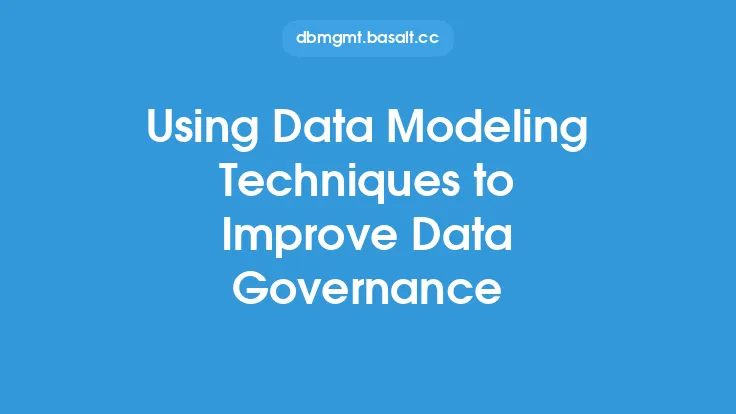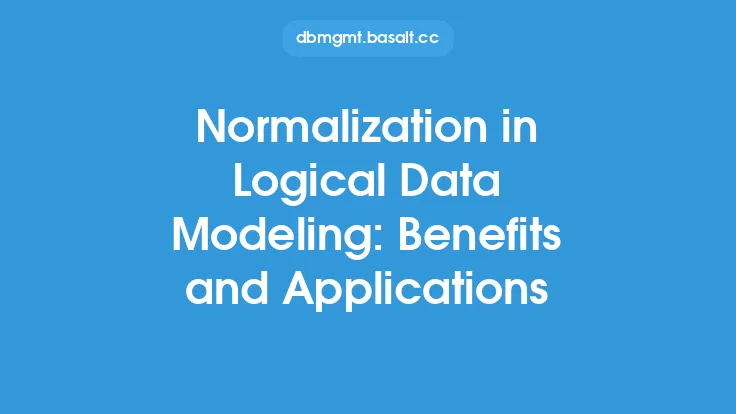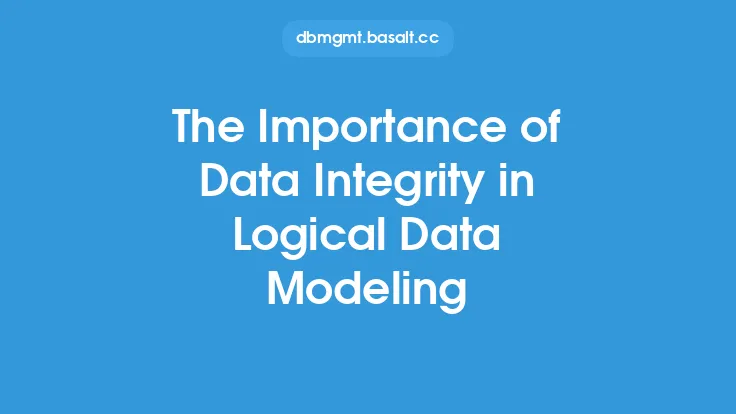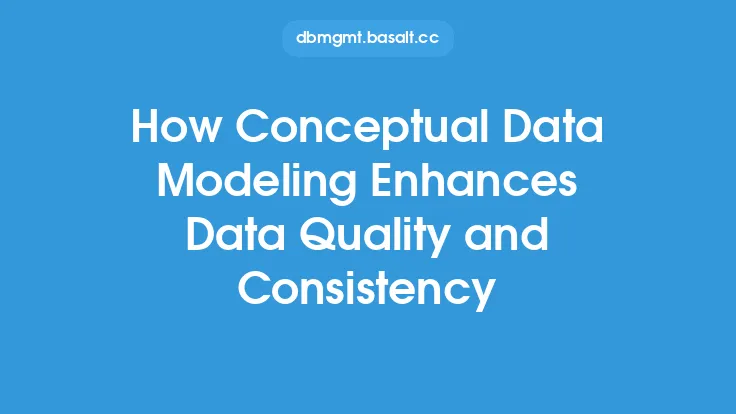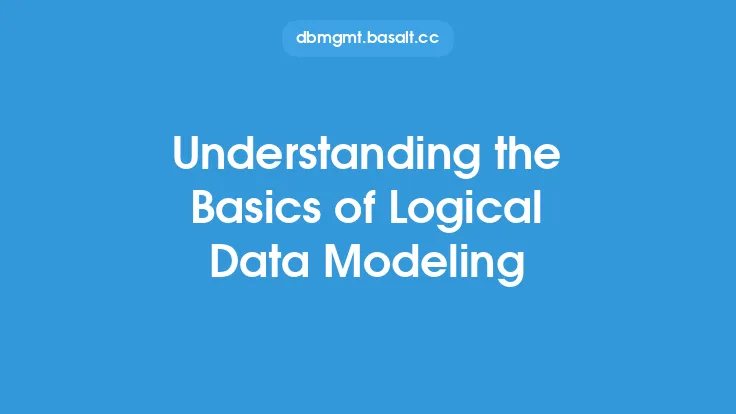Logical data modeling is a crucial step in the data modeling process that helps to ensure the quality and integrity of data. It involves creating a detailed, abstract representation of the data entities, attributes, and relationships that are relevant to an organization's business needs. By using logical data modeling, organizations can improve the quality of their data, reduce errors, and increase the overall efficiency of their data management systems.
Introduction to Logical Data Modeling
Logical data modeling is a type of data modeling that focuses on the logical structure of the data, rather than the physical implementation. It involves identifying the entities, attributes, and relationships that are relevant to the business, and creating a model that represents these components in a logical and consistent way. The goal of logical data modeling is to create a model that is independent of any specific database management system or physical implementation, and that can be used to guide the design of the physical database.
Benefits of Logical Data Modeling for Data Quality
Logical data modeling has several benefits for data quality, including:
- Improved data consistency: By creating a logical model of the data, organizations can ensure that the data is consistent across different systems and applications.
- Reduced data redundancy: Logical data modeling helps to identify and eliminate redundant data, which can reduce errors and improve data quality.
- Improved data integrity: By defining the relationships between different data entities, logical data modeling can help to ensure that the data is accurate and consistent.
- Better data governance: Logical data modeling provides a framework for data governance, which can help organizations to manage their data more effectively and ensure that it is secure, accurate, and compliant with regulatory requirements.
Key Components of Logical Data Modeling
There are several key components of logical data modeling, including:
- Entities: These are the objects or concepts that are being modeled, such as customers, orders, or products.
- Attributes: These are the characteristics or properties of the entities, such as customer name, order date, or product description.
- Relationships: These are the connections between different entities, such as the relationship between a customer and an order.
- Data types: These are the specific types of data that are being used to represent the attributes, such as integer, string, or date.
Best Practices for Logical Data Modeling
There are several best practices for logical data modeling, including:
- Start with a clear understanding of the business requirements: The logical data model should be based on a clear understanding of the business needs and requirements.
- Use a consistent naming convention: The naming convention used for the entities, attributes, and relationships should be consistent throughout the model.
- Use data normalization techniques: Data normalization techniques, such as first normal form (1NF), second normal form (2NF), and third normal form (3NF), can help to ensure that the data is consistent and accurate.
- Use data validation rules: Data validation rules can help to ensure that the data is accurate and consistent, and that it conforms to the business rules and requirements.
Tools and Techniques for Logical Data Modeling
There are several tools and techniques that can be used for logical data modeling, including:
- Entity-relationship diagrams (ERDs): These are graphical representations of the entities, attributes, and relationships in the model.
- Data modeling software: There are several software tools available that can be used to create and manage logical data models, such as ERwin, PowerDesigner, and Enterprise Architect.
- Data modeling languages: There are several data modeling languages available, such as SQL and XML, that can be used to define and implement the logical data model.
Challenges and Limitations of Logical Data Modeling
There are several challenges and limitations of logical data modeling, including:
- Complexity: Logical data modeling can be a complex and time-consuming process, especially for large and complex systems.
- Data quality issues: Poor data quality can make it difficult to create an accurate and consistent logical data model.
- Lack of standardization: There is no standard approach to logical data modeling, which can make it difficult to compare and integrate different models.
- Limited scalability: Logical data models can become unwieldy and difficult to manage as the size and complexity of the system increases.
Conclusion
Logical data modeling is a critical step in the data modeling process that can help to improve the quality and integrity of data. By creating a detailed, abstract representation of the data entities, attributes, and relationships, organizations can ensure that their data is consistent, accurate, and compliant with regulatory requirements. While there are several challenges and limitations to logical data modeling, the benefits of improved data quality, reduced errors, and increased efficiency make it a valuable investment for any organization. By following best practices, using the right tools and techniques, and staying focused on the business requirements, organizations can create a logical data model that meets their needs and helps them to achieve their goals.
